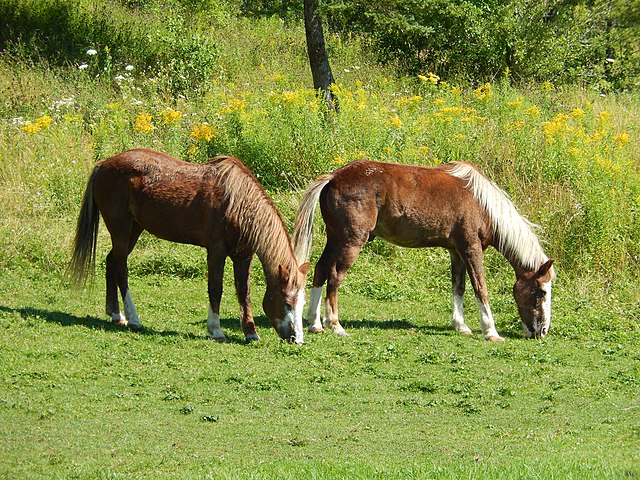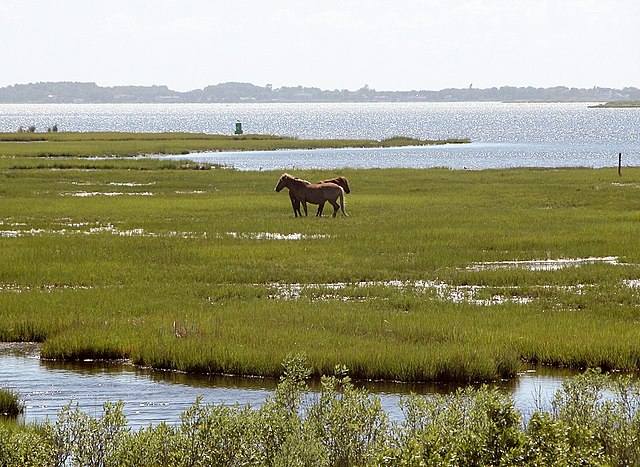The Sable Island horse is a small feral horse found on Sable Island, off the coast of Nova Scotia, Canada. It has a horse phenotype and horse ancestors, and is usually dark in colour. The first horses were released on the island in the late 1700s, and soon became feral. Additional horses were later transported to improve the herd's breeding stock. They were rounded up for private use and sale for slaughter, which by the 1950s had placed them in danger of extinction. During the 2018 study, the estimated population was 500 horses, up from the roughly 300 recorded in the 1970s.
Feral Sable Island horses
Typical colour patterns
Ponies in Halifax, Nova Scotia for auction in 1902, after having been removed from the island
Sable Island Horses at the Shubenacadie Wildlife Park
A feral horse is a free-roaming horse of domesticated stock. As such, a feral horse is not a wild animal in the sense of an animal without domesticated ancestors. However, some populations of feral horses are managed as wildlife, and these horses often are popularly called "wild" horses. Feral horses are descended from domestic horses that strayed, escaped, or were deliberately released into the wild and remained to survive and reproduce there. Away from humans, over time, these animals' patterns of behavior revert to behavior more closely resembling that of wild horses. Some horses that live in a feral state but may be occasionally handled or managed by humans, particularly if privately owned, are referred to as "semi-feral".
Feral Chincoteague ponies on Assateague Island, Virginia
Feral horses of the Namib
Feral horses in Tule Valley, Utah
Semi-feral Exmoor ponies on Porlock common, Exmoor: They are gathered each year to remove foals and assess stock.








